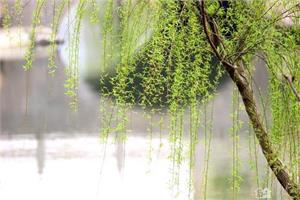How to keep the succulent plants of Prunus officinalis to produce plump succulent plants
Now people's requirements for the quality of life are getting higher and higher, and the taste of life is also improving. Potted plants are very popular. Almost every office worker will put a pot of green plants on their desks to give them monotonous work and add a little vitality. That's good. So, what we are going to talk about today is the cultivation of coconut bonsai, and you can also learn and plant a pot.

First, coconut bonsai cultivation
The adaptability of the small coconut tree is relatively strong, but if it is too lazy or improperly operated in the process of breeding, it will still cause its leaves to turn yellow and so on.
1. Growth habits: like warm, moist and semi-overcast environment. The suitable temperature for growth is 20-30 degrees, entering the dormancy period at 13 degrees, and the lowest overwintering temperature in winter is 3 degrees.
2. Potted soil: small coconut potted plants can be cultivated with rotten leaf soil, peat soil, 1 + 4 river sand and a small amount of base fertilizer as substrate. It is best to plant in a loose and fertile loam with good drainage.
3. Watering: follow the method of keeping the soil wet rather than dry to keep the soil moist for a long time. Under hot and dry conditions in summer, it is necessary to spray water frequently to increase the humidity of the surrounding air and make the leaves evergreen; in winter, water irrigation should be reduced to better survive the cold winter.
4. Fertilization: liquid fertilizer, organic fertilizer or three elements can be applied 1-2 times a month during the growing period. Slightly apply thin fertilizer from late autumn to winter, and do not need fertilizer after entering the dormant period.
5. Sunlight: it is suitable to grow in a semi-overcast environment, pay attention to proper shade in high temperature weather, leave 50-60% light, and must not accept strong light, otherwise it will make the leaves fade or even turn yellow, cause scorched leaves and black spot, and affect the beauty.
6. Temperature: the suitable temperature for growth is 15-30 ℃, including 19-30 ℃ from May to September and 13-16 ℃ from October to April of the following year. It can withstand the high temperature of 35 ℃ in summer, and when the temperature is above 35 ℃, proper shading or measures such as water spraying and ventilation should be taken. The ambient temperature should be maintained at no less than 5 ℃ in winter, otherwise the long-term temperature below 5 ℃ will be easy to freeze and fall leaves.
7. Diseases and insect pests: small coconut trees are prone to social brown spot under high temperature and high humidity. If brown spot is found, topiramate or chlorothalonil should be used in time to control the disease. Scale insects are also easy to occur in dry air and poor ventilation. If shell insects are found, they can be sprayed with 8-1000 times omethoate in addition to artificial scraping.
Second, the reason why the leaves of coconut bonsai turn yellow.
Too little watering: small coconut trees like to be moist and need plenty of water. If they are watered too little, the leaves will turn yellow and gradually wither and fall. Solution: often watering to keep the basin soil moist, when the air is dry in summer and autumn, often spray water to the plant to improve the air humidity of the environment.
Excessive fertilization: small coconut trees do not have high requirements for fertilizer. If you apply too much fertilizer, fertilizer damage will occur, resulting in yellow leaves of small coconut trees. Solution: small coconut trees apply liquid fertilizer 1-2 times a month during the growing season, with little or no fertilization at the end of autumn and winter.
Excessive light: small coconut trees like semi-overcast conditions. when the light is too strong, the leaves of small coconut trees will turn pale or yellow, losing their ornamental value. Solution: keeping small coconut trees in places with sufficient astigmatism can not only provide enough light to grow, but also will not cause yellowing of leaves caused by excessive light.
Disease infection: small coconut trees are easy to be infected by root rot in high temperature season. Disease infection will cause small coconut leaves to turn yellow and wilt, and in serious cases, it will cause plant death. Solution: pay attention to the small coconut tree growth environment ventilation and soil ventilation, the disease can be sprayed with topiramate and chlorothalonil.
If you want to know more about it, you can continue to follow the No.1 Home Network.
- Prev

What is the function of the fruit of cactus
What is the function of the fruit of cactus
- Next

Treat and repair injured weeping willows to purify the city's air and beautify the city's environment
Treat and repair injured weeping willows to purify the city's air and beautify the city's environment
Related
- Wuhan Hospital Iron Tree Blooming Result Was Instantly Frightened by the Gardener Master
- Which variety of camellia is the most fragrant and best? Which one do you like best?
- What is the small blue coat, the breeding methods and matters needing attention of the succulent plant
- Dormancy time and maintenance management of succulent plants during dormancy
- Minas succulent how to raise, Minas succulent plant pictures
- What are the varieties of winter succulent plants
- How to raise succulent plants in twelve rolls? let's take a look at some experience of breeding twelve rolls.
- Attention should be paid to water control for succulent plants during dormant period (winter and summer)
- Watering experience of twelve rolls of succulent plants
- Techniques for fertilizing succulent plants. An article will let you know how to fertilize succulent plants.

